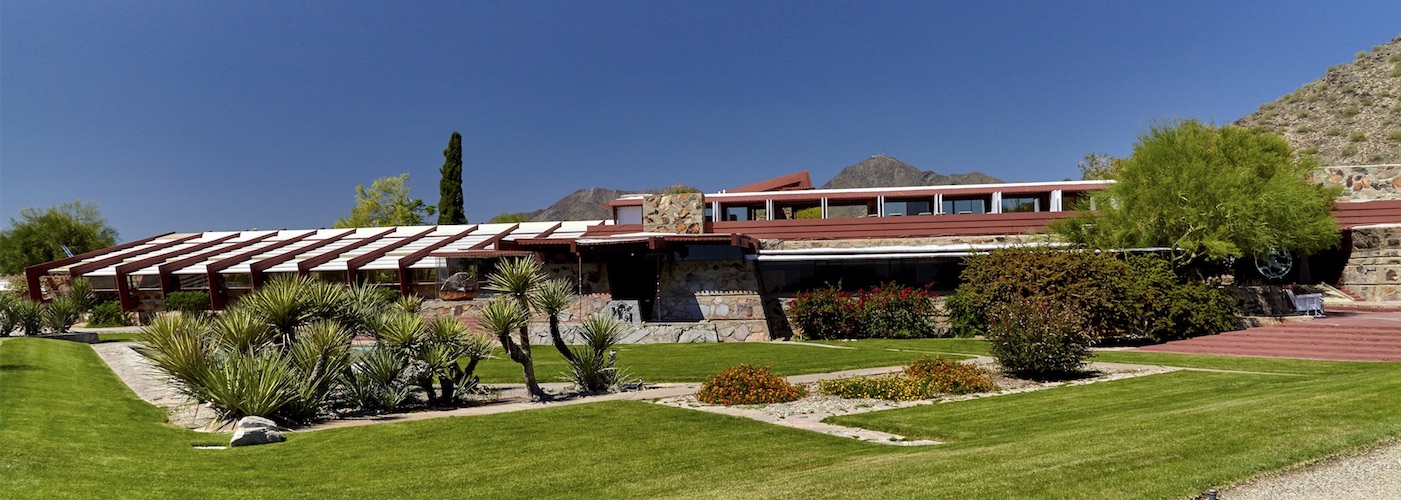American architecture developed its own identity with the work of architect, interior designer, teacher and writer, Frank Lloyd Wright (8 May 1867 – 9 April 1959).
It is said that as a child the surrounding Wisconsin countryside as well as geometric wooden blocks he played with founded Wright’s love of nature and of geometry. Later, wealthy home owners commissioned homes by Wright whose work extended to interiors designed in great detail, including light fittings and furniture, rugs and fabrics. Glass art windows utilised coloured, opaque and translucent textured glass set within a zinc or copper plated frame, sometimes at angles to catch the light. Designs were geometric abstractions of trees and plants. These windows have inspired the graphic and branding of CourtHeath Consulting: the windows add light to a situation, with the bold geometry requiring all pieces to fit exactly.
Frank Lloyd Wright, an architect whose work continues to inspire.
Early works in the 1890s show the influence of the architect and his ‘Dear Master’ Louis Sullivan, the East Coast Shingle Style, and ideals of the British-led Arts and Craft movement. Later travels to Europe and Japan brought other influences to his work. Drawing on all these influences, Wright established an American style. Throughout his 70 years of practice, the prolific Wright had many students and followers. He built houses for the wealthy, as well as prefabricated housing for the post-war population. These ideas expressed in his detailed projects continue to inspire designers the world over.
Working with Wright from 1901-1905 was Walter Burley Griffin, who shared an interest in ‘Spirt of Nature’, and the philosophy of Emerson and Thoreau. Patterns of nature inspired the built form, abstracted into geometric elements. His first employee, Marion Mahony illustrated Wright’s early Prairie Style designs with watercolour drawings that helped establish Wright. Mahony and Griffin later married, and in 1912 won the international design competition for Canberra, and moved their practice to Australia for 20 years. This connection extends the influence of America’s great architect in Australia. After resigning from the Canberra project after six years, Griffin and Mahony practised in New South Wales and Victoria, designing towns and suburbs in addition to buildings. Their legacy includes the Eaglemont Community Plan, a wing of Newman College at the University of Melbourne 1915-18, and the highly detailed Capitol House and theatre of 1921.
Well known images of Frank Lloyd Wright buildings as sculptural elements within a landscape, include the early Robie House (1906) in suburban Chicago, Fallingwater (1936-39) in the forest at Mill Run, Pennsylvania, and his home and studio Taliesin West (1937-59), in Arizona (main picture). Porches and terraces extend the house into the gardens and natural world beyond, viewed by walls full of glass, a very new concept in the early 20th century. Together these buildings helped create architecture that belonged to the landscape. Cultural identity expressed in the built form.
Commercial building commissions followed his extensive residential work. To achieve his bold designs, Wright worked with engineers testing the limits of materials, and used emerging technologies in search of innovation. The spiralling white form of the Guggenheim Museum of Modern Art in New York, (1956-59) is amongst the most recognisable and visited buildings in the world.
The horizontal forms of the Robie House, and the rugged stone and timber of houses in Arizona, are reflected in generations of Australian homes, both suburban and in wider landscapes.
150 years since his birth, the name Frank Lloyd Wright is known by many, and his detailed buildings continue to influence designers.
Sometimes referred to as America’s greatest 20th century architect, Wright’s work is full of influences from time spent in Japan and in Europe and continues to influence architecture internationally. An extensive program of educational events and tours of his buildings celebrates the 150th birthday of this controversial and visionary architect.
Ref: This is Frank Lloyd Wright, Ian Volner 2016
* * *
Recommended:
- Frank Lloyd Wright (official website)
- Frank Lloyd Wright in Australian Architectural Journals, 1890-1925
- Frank Lloyd Wright in 45 essential works (US)
Frank Lloyd Wright exhibition listings, information about his work and works for sale by FLW and related artists can be found at Artsy.net by clicking on the link to their Frank Lloyd Wright page.
* * *
IMAGE used under licence from shutterstock.com: Frank Lloyd Wright’s Taliesin West compound in the desert of northern Arizona.
 CourtHeath Consulting
CourtHeath Consulting CourtHeath Consulting
CourtHeath Consulting